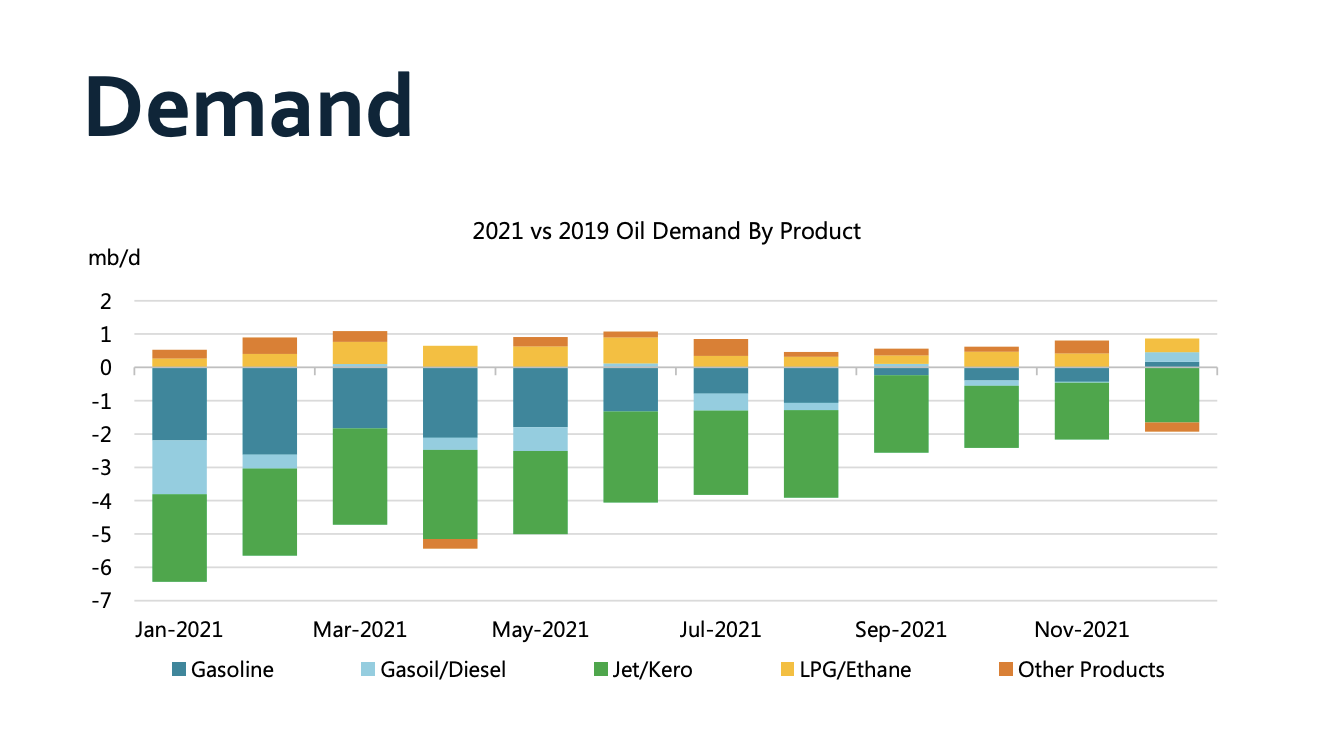
Peter Summers/Getty Images
- For 2021, global oil demand is forecast to grow by 5.5 million bpd to 96.5 million bpd, the IEA said.
- Oil demand will recover around 60% of 2020 lost volume, but won't return to 2019 levels until 2023.
- "There is more than enough oil in tanks and under the ground to keep global oil markets adequately supplied."
- See more stories on Insider's business page.
The oil price has recovered its pandemic losses, demand is picking up as greater numbers of people are vaccinated against COVID-19 and the world's largest exporters aren't ramping up production, but talk of a new super-cycle and massive supply deficits are premature, according to the International Energy Agency.
The Paris-based IEA expects demand to pick up swiftly over the second half of this year, but there is also also plenty of scope for those producers that are currently restraining output to open the taps, meaning global demand won't return to its pre-pandemic levels for another two years, it said.
"Oil's sharp rally to near $70 a barrel has spurred talk of a new super-cycle and a looming supply shortfall. Our data and analysis suggest otherwise. For a start, oil inventories still look ample compared with historical levels despite a steady decline from a massive overhang that piled up during 2Q20," the agency said in its monthly report.
The IEA said colder weather and a pickup in industrial activity has helped feed global oil demand, which is expected to rise by 5.3 million barrels per day between the first and fourth quarters of this year.
For 2021, global oil demand is forecast to grow by 5.5 million bpd to 96.5 million bpd, recovering around 60% of the volume lost in 2020, the agency said. Oil demand will return to 2019 levels by 2023, it added.
Furthermore, a stronger economy and the ongoing rollout of COVID-19 vaccines will continue to support demand growth in the second half of the year, which will help close the demand shortfall to 1.4 million bpd by the final quarter of the year, from around 4.8 million bpd in the first quarter, the IEA said.
However, the main driver of the supply/demand balance in the oil market is the Organization of the Petroleum Exporting Countries, and their partners, such as Russia and Oman. The so-called OPEC+ group has voluntarily reduced production since the impact of the pandemic sent the crude price spiraling to historic lows, to as little as -$40 a barrel for the US benchmark at one point.
OPEC+ is currently withholding around 8 million bpd of supply from the market. This is down from the record 9.7 million bpd cut agreed last spring, but is still serving to underpin the price of oil, which is trading around $68 a barrel, has risen by 170% in the last year, and helping to drain global excess inventories.

International Energy Agency
The IEA said OPEC's spare capacity, excluding that of Iran, which is still subject to Trump-era US sanctions on its exports, was at 7.7 million bpd in February, while non-OPEC countries that are part of the deal hold an extra 1.6 million bpd that could be brought onto the market "in short order," the IEA said.
In terms of global supply, output from non-OPEC+ countries will rise by 700,000 bpd after a drop of 1.3 million bpd in 2020, while US oil production will drop 180,000 bpd, following 2020's 600,000 bpd decline, the agency said.
"The prospect of stronger demand and continued OPEC+ production restraint point to a sharp decline in inventories during the second half of the year. For now, however, there is more than enough oil in tanks and under the ground to keep global oil markets adequately supplied," the agency said.